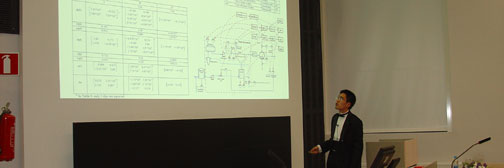| | Year 2010
Michael Oteng PeprahThe influence of mineralogy on upgrading of Polish copper ores
Upgrading curves play a significant role in visualization and analysis of separation results. Analysis of any separation from the upgrading point of view takes into account certain basic components such as yield and content. Since these components can be combined into unlimited number of new parameters, there are many upgrading curves. Each curve has its own unique way of analysing separation results. However, all these curves are generated from separation results without considering influence of mineralogy on them.
The thesis centered on influence of mineralogy on upgrading of Polish copper ore. The literature part of this thesis reviewed the theory of upgrading and separation curves. Many upgrading curves and their characteristics were described. Chemometric analysis and
their application were also discussed in the literature part and mathematical equations for upgrading of separation results reviewed.
The data used for this thesis was obtained from three mineral processing plants in Poland and included data on flotation results, mineralogy results and lithological layer percentages. Geological samples were taken from different mining areas of the processing
plant with sandstone, shale and dolomite as the lithological layers. Fuerstanau and Halbich upgrading curves were used for approximation and determination of upper maximum practical copper content respectively.
Fuesrtsnau upgrading curves were drawn for the flotation results. These curves were approximated with a characteristic equation into a single parameter which characterises the whole upgrading curve. This parameter was changed into a parameter /F/ on the Fuersternau upgrading curve through an equation.
The maximum practical copper content in the concentrate was obtained by using the Halbich upgrading curve. Maximum theoretical copper content was determined through calculation from the mineralogical results.
A calibration curve was developed which correlates MPC and MTC. Chemometric analyses between the copper content, the flotation parameter and mineralogical results were conducted to identify the influence of minerals on flotation and copper content in the
concentrate. The same analysis was conducted on the flotation parameter and the lithological layer results.
The results of the experiments show, galena and pyrite are detrimental to flotation of copper while the presence of bornite enhanced the copper content in the concentrate. Lithological chemometric analysis showed shale as responding poorly to flotation.
The calibration curve which was developed can aid in forecasting and predicting the copper content in the concentrate by conducting mineralogical analysis. This curve is however case specific and cannot be applied to other ores with different mineralogical characteristics.
This info last modified 27 Apr 2024 - contact webmaster
|

